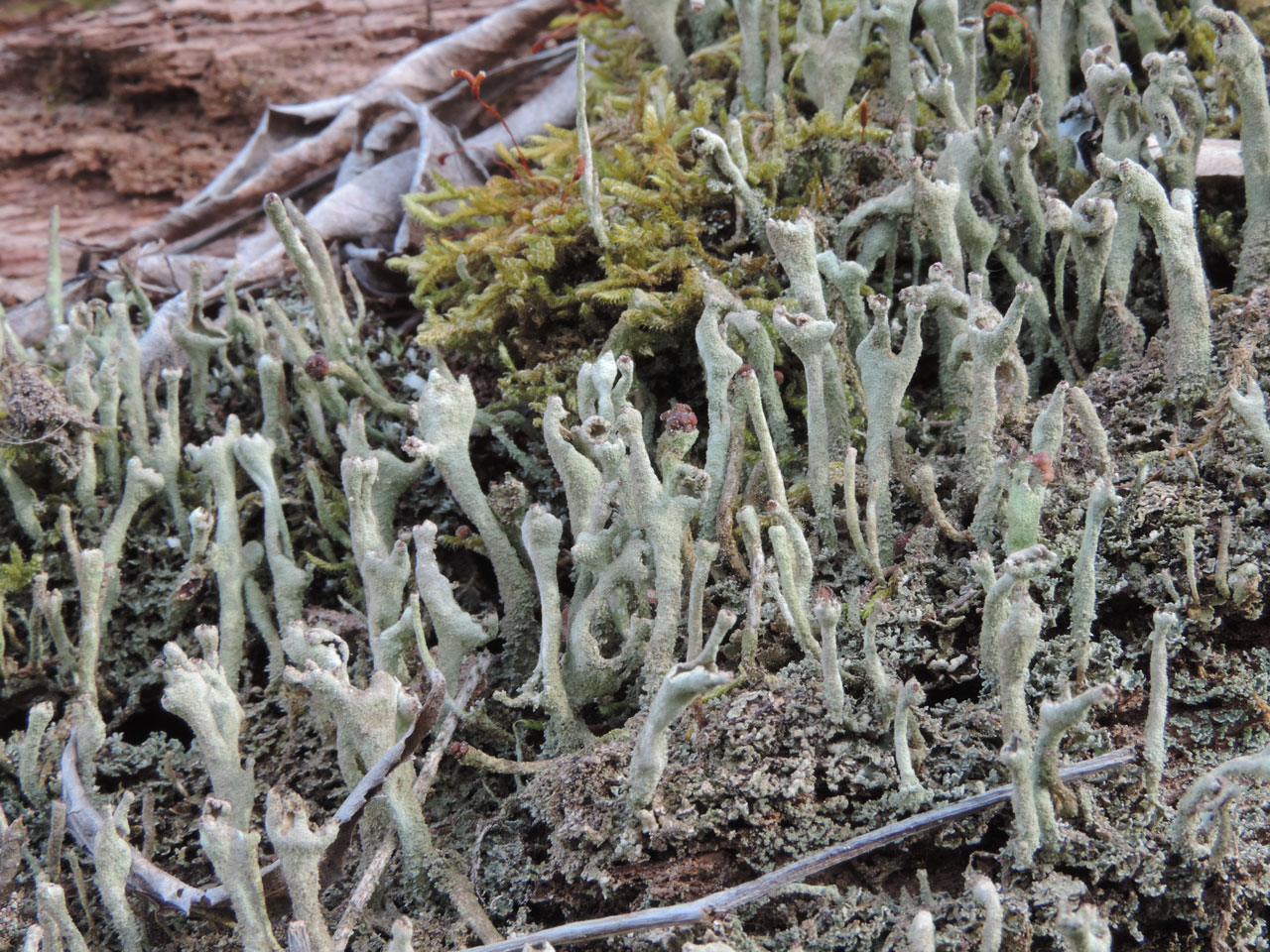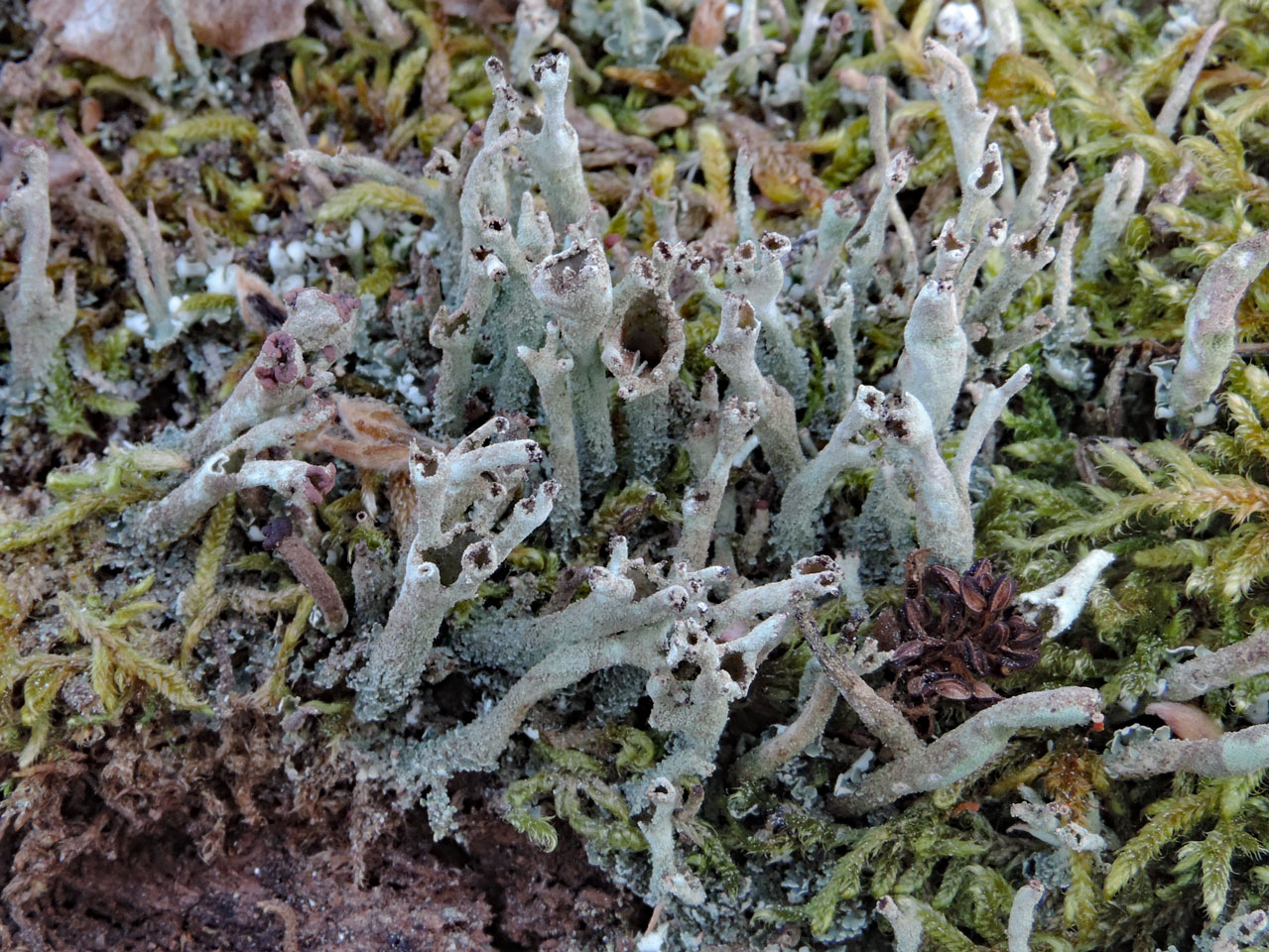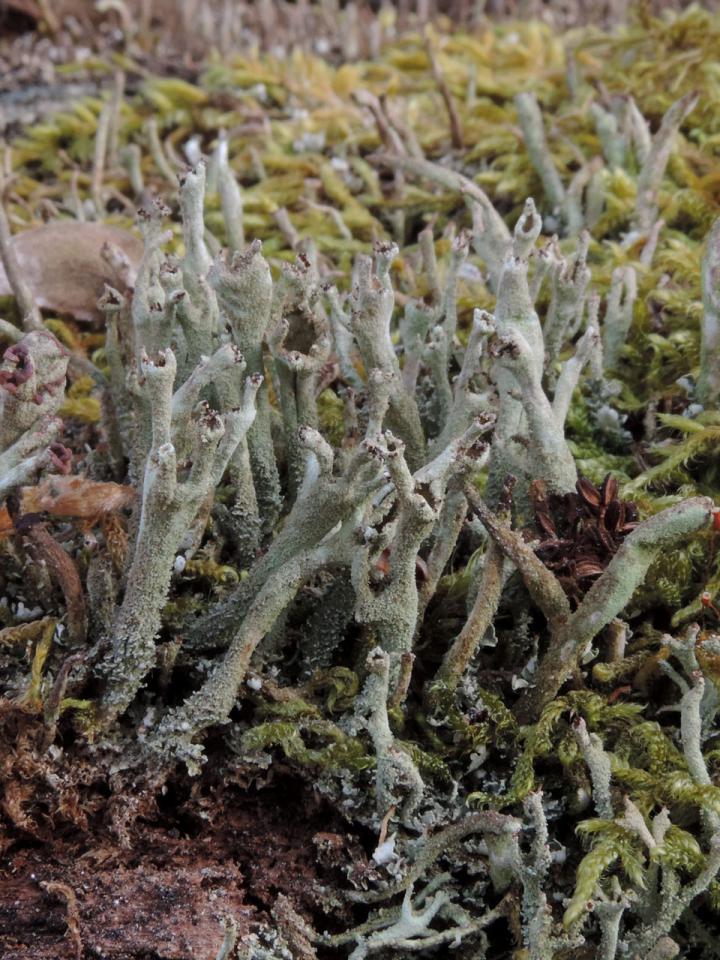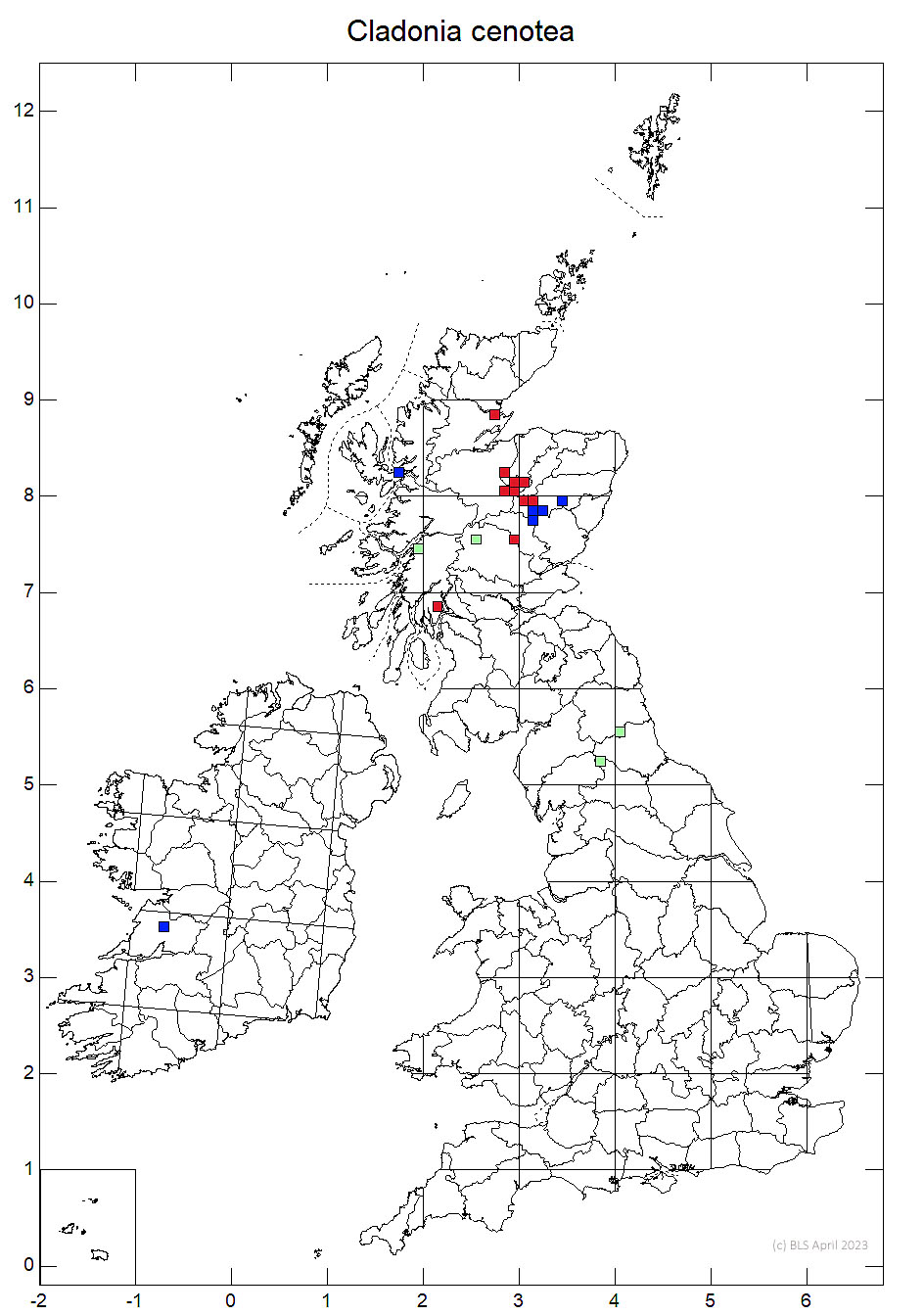Cladonia cenotea
A highly distinctive Cladonia and the only British species with both brown fruit and soredia which has well developed perforate cups. It is also UV+ white (squamatic acid). A characteristic species of fallen deadwood in Caledonian pine woodlands, currently mostly known from the east Highlands.
Podetia 1–2.5 cm tall, greyish or greenish brown, often clustered, unbranched or sparingly branched above, with narrow, notably perforate cups which irregularly proliferate from the margins, surface farinose-sorediate throughout, sometimes with small squamules, particularly at the base. Basal squamules small, indented, often rather inconspicuous. Apothecia brown, rare, at the apices of podetia. Thallus C–, K–, KC–, Pd–, UV+ white (squamatic acid).
Distinguished by the clearly and consistently perforated cups, a feature absent in all other brown-fruited, sorediate, ± unbranched species with cups, e.g. Cladonia fimbriata, C. chlorophaea s. lat. When the cups are narrow and the podetia elongate, C. cenotea may be difficult to distinguish from the otherwise similar C. glauca, which can rarely have small cups.
On fallen conifer lignum, stumps and humus amongst Calluna; mostly confined to ancient Caledonian pine woodlands where it is not uncommon. Occurs on Oak lignum in continental Europe and should also be looked for on this habitat in sub-oceanic woods in Scotland.

Only recently recorded from Scotland, mainly in the eastern central Highlands in the wider Cairngorm area. Some very old records from Northern England.
Requires fallen dead wood that is left to decay and does not become too shaded. Grazing reductions within old growth pinewoods to allow regeneration can lead to increased shade on deadwood unless care is taken. The conservation objectives for native pinewood sites need to take account of the biodiversity importance of the combination of open space and dead wood within this iconic habitat.
Britain: Near Threatened
Scotland: Priority Taxon for Biodiversity in Scotland
Pino-Bodas, R., Sanderson, N., Cannon, P., Aptroot, A., Coppins, B., Orange, A. & Simkin, J. (2021). Lecanorales: Cladoniaceae, including the genera Cladonia, Pilophorus and Pycnothelia. Revisions of British and Irish Lichens 19: 1-45. Link
Rothero, G. P. 2006 Bryophytes. In: The Nature of the Cairngorms, Diversity in a Changing Environment; Philip Shaw & Des Thompson (eds.). The Stationery Office. pp. 177–193.
Text by Neil A Sanderson, based on Pino-Bodas et al (2021)



